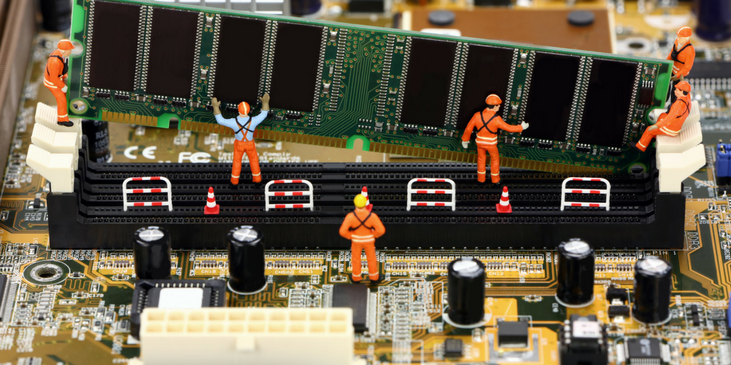In an enterprise IT landscape where buzzwords are thrown about like confetti, it can be difficult to identify genuinely useful ideas from those created just to obfuscate –what, exactly, is Systems Integration and is it necessary or needless?
For businesses looking to add to their IT infrastructure, there’s not exactly a shortage of choice. In fact, there are over 3,300,000 apps in Google’s Play Store alone, the majority of which are designed, developed and published by different companies.But once you’ve got your hands on that new invoicing app, payroll software or inkless printer, how do you ensure it works with the rest of your intricate IT eco-system?
Systems integration is the process of consolidating all the disparate software and hardware you rely on and enabling it to successfully interact and perform overarching functionalities. This may be a large-scale project to connect entire IT systems, or it can be a simple case of integrating a single new app into your business.
In short, systems integration is what stops you from kneeling in front of your printer in tears, offering up your laptop in sacrifice to some malignant IT demon because it can’t locate the aforementioned printer – even though it’s right there…like, literally right there in front you.
Systems Integration in the Digital World
In the past, businesses commonly relied on a single IT system to provide all the functionality they needed – from HR and inventory, to finance and sales.
Today, more specialised systems tend to be used for each overarching functionality and it’s normal for niche applications to be used to perform individual tasks within a business. And with the amount of choice available, it’s even common to have multiple apps for the same purpose, for example, email, live-chat, WhatsApp and a phone number for customer service.
Decades of adding new hardware and software to your IT landscape piece by piece means you might now be relying on hundreds, if not thousands, of applications and tools – some operating on different, and even conflicting, platforms.
Therefore, the role of systems integration is vital in the digital world. With so many different tools available, you run the risk of your IT infrastructure becoming splintered and disconnected.
This is the truer measure of how valuable a systems integration project can be to your business – how much value it can add to your IT infrastructure by connecting the disparate elements, enabling them to interact, share data and ultimately provide a functionality greater than the sum of its parts.
The Impact of Systems Integration
The modern-day customer journey is far more splintered and non-linear than in the past, spanning a multitude of channels, platforms and devices. Yet, paradoxically, it’s also a much more connected and integrated experience.
To truly provide the right customer experience in this digital-first, mobile-first and on-demand world, you need to consider how your products or services function in a world driven by experience engineering, internet of things, big data, omnichannel marketing and cloud computing.
Without a well-connected IT infrastructure, this simply isn’t possible without feeling unwieldy and disjointed. But with a systems integration project, all the different touchpoints of the customer journey are part of the same system, sharing the data and providing a single view of the customer.
Properly integrated technology has the benefit of greatly increasing collaboration and communication within your organisation, as everyone has access to the same files, data and programmes. This also helps projects stay on-schedule and improve your rate of business change.
Making use of a systems integration expert means your IT infrastructure can be redesigned, aligning your use of technology with your business strategy so it operates in the most efficient and effective way to achieve your goals.
This is a great opportunity to not just add new tools to a cluttered workspace but add the right range of tools, giving customers and employees the opportunity to use the technology they are most comfortable with – including more specialised apps for their role, as opposed to competitors with wider functionality.
It’s also a chance to retire outdated systems, obsolete software and unusable data, clearing up your IT infrastructure to increase velocity and efficiency – make it easier to migrate to new systems.
Systems Integration, DevOps and Digital Transformation
If the idea of a better-connected,
Although they are all separate concepts, they are also intertwined and connected by shared ideas and overlapping goals:
- DevOps – An organisation works better when it operates as a whole, rather than a handful of disparate departments
- Systems Integration – Technology can do more for you when it is aligned with your goals and connected to the rest of your IT infrastructure.
- Digital Transformation – Business processes need to be optimised to better meet customers on their digital customer journey.
Just as rivers and streams wind their way through the country in pursuit of the sea, systems integration, DevOps and digital transformation wind their way through your business in pursuit of the same goal –more effective operations in the Digital World.
In short, systems integration better ensures your IT infrastructure is properly connected to not just get the most from your technology but also add value to it. When used in conjunction with other modern IT concepts, systems integration provides the connected IT infrastructure required for businesses to better meet their customers in the Digital World.



